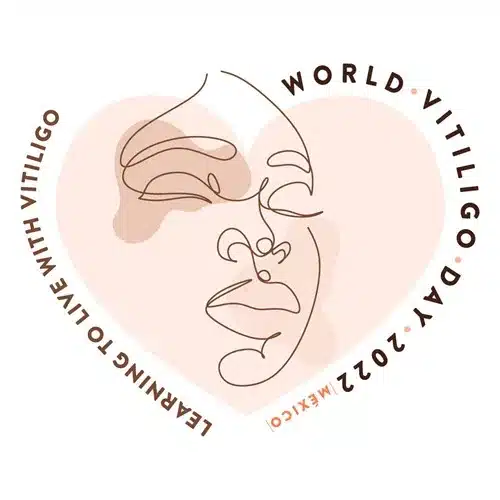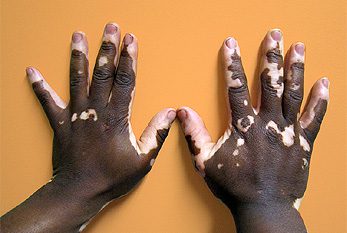World Vitiligo Day 2022 and its Significance

25 June is observed as World Vitiligo Day. It is an initiative aimed to build global awareness about vitiligo. Its purpose has broadened from raising awareness of vitiligov to include recognition of the bullying, social neglect, psychological trauma and disability of millions of people affected by vitiligo.
Vitiligo is a skin disease where pale white patches start forming on the skin due to lack of melanin, a skin pigment. Almost 1-2 per cent of the population across the globe suffer from this condition, which is rare and often met with misconceptions. One of the most common misconceptions is that vitiligo is contagious — however, it is essential that the condition is not contagious and does not spread from getting in direct contact with the affected person.
Medical research has not found a particular cause for this autoimmune disorder. The possibilities of vitiligo occurring due to genetic conditions or stress-induced situations are likely to hold true. Vitiligo can affect any area of the skin, but it is mostly observed on the face, neck, arms and skin creases. The pale area of the skin is extremely prone to sunburn, which is why it is essential to take care of it.
Theme of World Vitiligo Day 2022
25 June is observed as World Vitiligo Day. The Theme of World Vitiligo Day 2022 is “Learning to Live With Vitiligo“. In the last decade, campaign headquarters have been hosted by different countries with different ideas, and this year the campaign headquarters will be hosted by Mexico under the guidance of Prof. Dr. Med. Jorge Ocampo Candiani.
What causes Vitiligo?
The absolute cause of vitiligo is not known, but most experts suspect that it is an autoimmune condition in which the body’s immune system attacks its own cells or tissues. Also, there is no evidence why the melanocytes die, but genetics is assumed to be the reason to some extent.
Some of the known factors that could be the cause of vitiligo are:
- Autoimmune Disorder: This is a condition in which the affected person’s immune system may produce antibodies that destroy the melanocyte.
- Genetic factors: Inheritance could be one of the factors that can lead to the cause of vitiligo. Around 30% of the affected have a history of vitiligo presence in their family.
- Neurogenic Factors: There is a chance of releasing toxins at nerve endings in the skin, which can destroy melanocytes.
- Self-Destruction: a defect within the melonocytes can lead to self-destruction.
- What are the symptoms of vitiligo?
- The main symptom of vitiligo is the loss of pigment that occurs in any part of the body.
The symptoms of vitiligo are categorised based on segmentation:
Segmental Vitiligo: Also known as localised vitiligo, it affects only one area of the body and is generally found in children. This disease is less common as compared to non-segmental vitiligo.
Non-segmental Vitiligo: It can appear on both sides of the body as symmetrical white patches. It can affect arms, elbows, back of hands, knee, the skin around body openings, etc.
Other symptoms can includes:
- Premature whitening of the hair on the head, eyelashes, eyebrows, or beard
- Itching in the affected area
- Discoloration of the mucous membranes (tissue that lines the inside of your mouth and nose)
- Loss or discoloration of the inner lining of the eyeball (retina)
- Vitiligo treatment options
- There are many treatment options available for vitiligo, but unfortunately, there is no cure.
Some available Vitiligo treatments are:
- Camouflage therapy
- Repigmentation therapy
- Light therapy
- Surgery
Quick facts about Vitiligo
Here are quick facts about Vitiligo:
- Vitiligo is an autoimmune disorder and not merely a “cosmetic” problem.
- Vitiligo affects the immune system which then affects the skin, resulting in white patches.
- 70 million people across the world have vitiligo.
- There are no boundaries of race, ethnicity or gender.
- Anyone—children and adults representing all ethnicities— can get vitiligo at any time.
- 20-35% of patients are children.
- Nearly 1% of the population is affected.
- Vitiligo is NOT contagious.
- Vitiligo is difficult to hide. This disease is misunderstood and the isolation people with vitiligo feel can be crippling.
- Psychologically devastating, many patients feel isolated and devastated by its impact on their relationships and personal and professional lives.
- There is no known cure.
- There is very little research funding for vitiligo to better understand the disease and develop new treatments.
- Many of the currently available treatments are not covered by insurance.
History of World Vitiligo Day
The first World Vitiligo Day was held in 2011 and has since become an annual, global event. The campaign was born from the determination of non-profit organizations VR Foundation (USA) and VITSAF (Nigeria), and their supporters across the world, to bring this “forgotten” disease into the public eye, and to shine a light on challenges faced by those suffering from vitiligo.
This idea was nursed by Steve Haragadon, the founder of the Vitiligo Friends network, and then developed by Ogo Maduewesi, a Nigerian vitiligo patient who is the founder and Executive Director of the Vitiligo Support and Awareness Foundation (VITSAF). The first World Vitiligo Day, also known as Vitiligo Awareness Day or Vitiligo Purple Fun Day.
Observer Voice is the one stop site for National, International news, Sports, Editor’s Choice, Art/culture contents, Quotes and much more. We also cover historical contents. Historical contents includes World History, Indian History, and what happened today. The website also covers Entertainment across the India and World.
Follow Us on Twitter, Instagram, Facebook, & LinkedIn


